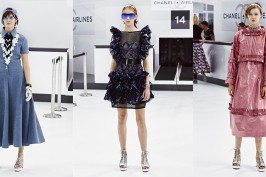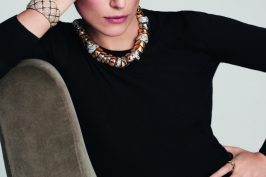If it were not for Ernest Beaux, the world may never have experienced the phenomenon called Chanel No.5, nor would you have discovered Ralph Lauren’s ever popular Polo had it not been resurrected from a ‘reject’! We revisit legendary perfumers who make your fragrances everlasting memories.
Have you ever wondered why you have not heard of the brand of perfume that a celebrity is wearing? After all, you know all the big names– Christian Dior, Yves St. Laurent, Chanel, Hermès and even the perfume-only houses like Guerlain. But what, in heaven’s name, is Byredo? Or Le Labo? Who is Frederic Malle? Or Annick Goutal? Or Francis Kurkdjian?
To understand the rise of the new perfume houses, you have got to understand how the perfume business works. The most famous perfume in the world is still Chanel No. 5. Yet though it will forever be associated with the legend of Coco Chanel, Mademoiselle Chanel did not invent it. She was a designer–a genius when it came to making clothes–but she did not know how to create a perfume.
So Coco Chanel commissioned a perfumer called Ernest Beaux and asked him to create a fragrance for her. Beaux went to see her with various samples of which she liked the fifth or the bottle marked No. 5. And that is how Chanel No. 5 was created!
To the credit of Coco Chanel she never pretended that she had created the perfume herself and always gave the credit to Ernest Beaux. And in no time at all, sales of Chanel No. 5 soared to the extent that it brought in more revenues than the clothes that Chanel was famous for.
The success of No. 5 gave other designers ideas. If Chanel could make so much money from a perfume, then why couldn’t they? And so, nearly every fashion house began to launch its own perfumes.
The problem was that the designers, however good they were at couture, knew very little about perfume. So, without exception, they hired outside perfumers, men like Ernest Beaux, to create the perfumes for them. Though unlike Chanel, they rarely gave any credit to the people who actually created the fragrances.
Often, they made it a point to conceal the name of the man or woman who had created the fragrance.
Take for instance such classic Dior fragrances as Diorissimo or the male Eau Sauvage. Both were made by a man called Edmond Roudnitska. However, you would be hard-pressed to find any mention of his name in the publicity for the fragrances.
One response to this trend of designer-fragrances-thatthe- designer-never-created was a shift in preference among fragrance fans towards cosmetics houses where perfume was a core business. In France, they still venerate the house of Guerlain which continues to make outstanding fragrances. In America, the Queen of perfume was Estée Lauder, owner of the eponymous makeup brand, who created some of America’s greatest perfumes.
But as the perfume market grew, it became more and more difficult for houses to go looking for individual perfumers. This led to the growth of the great industrial giants. These were companies with names like Givaudan or International Flavors and Fragrances Inc. whose only job was fragrance.
The rejected sample was later sold to Bulgari which called it Green Tea by Bulgari. It ended up being one of the most influential fragrances of that decade (though the one that eventually became Fahrenheit is very nice too!). Similarly, when Calvin Klein was looking to launch his own fragrance, he settled on one submission from a fragrance giant before changing his mind and rejecting it. Undeterred, the manufacturer sold the rejected fragrance to Ralph Lauren who launched it as Polo, one of the world’s most successful fragrances.
At some stage around 15 years or so ago, as perfume sales exploded, a select band of customers began to understand what was really going on. These so-called designer fragrances had nothing to do with the designers themselves and were collaborations between marketing teams and industrial fragrance manufacturers.
They learnt also that the price of a perfume really only reflected its marketing budget. In the case of the average designer scent, only eight per cent of the retail price represents the cost of the juice-or the perfume itself. The rest of it is packaging, marketing and retail margins.
A second phenomenon was also taking place. Many of the perfumers employed by the industrial fragrance giants felt restricted by the briefs given to them by marketing people and annoyed that they had to use cheap quality ingredients because the so-called designer fragrances relied on cheap juice in expensive bottles.
This started a trend towards niche perfumes. Some came from perfumers like Serge Lutens or Annick Goutal, who had always preferred to run small but high quality perfume houses. Others came from those who sensed that there was a gap in the market; Byredo, Le Labo, Bond No. 9, etc. Still others came from perfumers who had found success in the mainstream but wanted to do something less commercial and of higher quality. Francis Kurkdjian who made his name with Le Male for Jean Paul Gaultier started his own house under his own name. John Claude Ellena (Declaration by Cartier among many others) started A Different Company along with his daughter.
Then, the process went further. Frederic Malle set up what he regarded as a publishing house for fragrance. The label Frederic Malle would be like Penguin or Harper Collins. Each perfume it “published” would–as in the case of a book–carry the name of the fragrance and the perfumer. So Jean Claude Ellena gave him the formula for his Cologne Bigarade and it was “published” under Ellena’s name. Malle also found long-list formulas from the likes of the great Edmond Roudnitska.
It was inevitable that the big perfume houses and designer labels would retaliate. Estée Lauder started buying up niche houses like Jo Malone and Le Labo.
Others hired in-house perfumers of their own and became less dependent on the industrial giants. Some launched niche perfume lines of which the most successful have been Guerlain’s fragrances (made by Thierry Wasser) and Chanel’s Exclusifs range.
So the world of perfume is now a more complex place than ever before. Fortunately, it is also a more exciting place.
-Words By Neena Haridas










